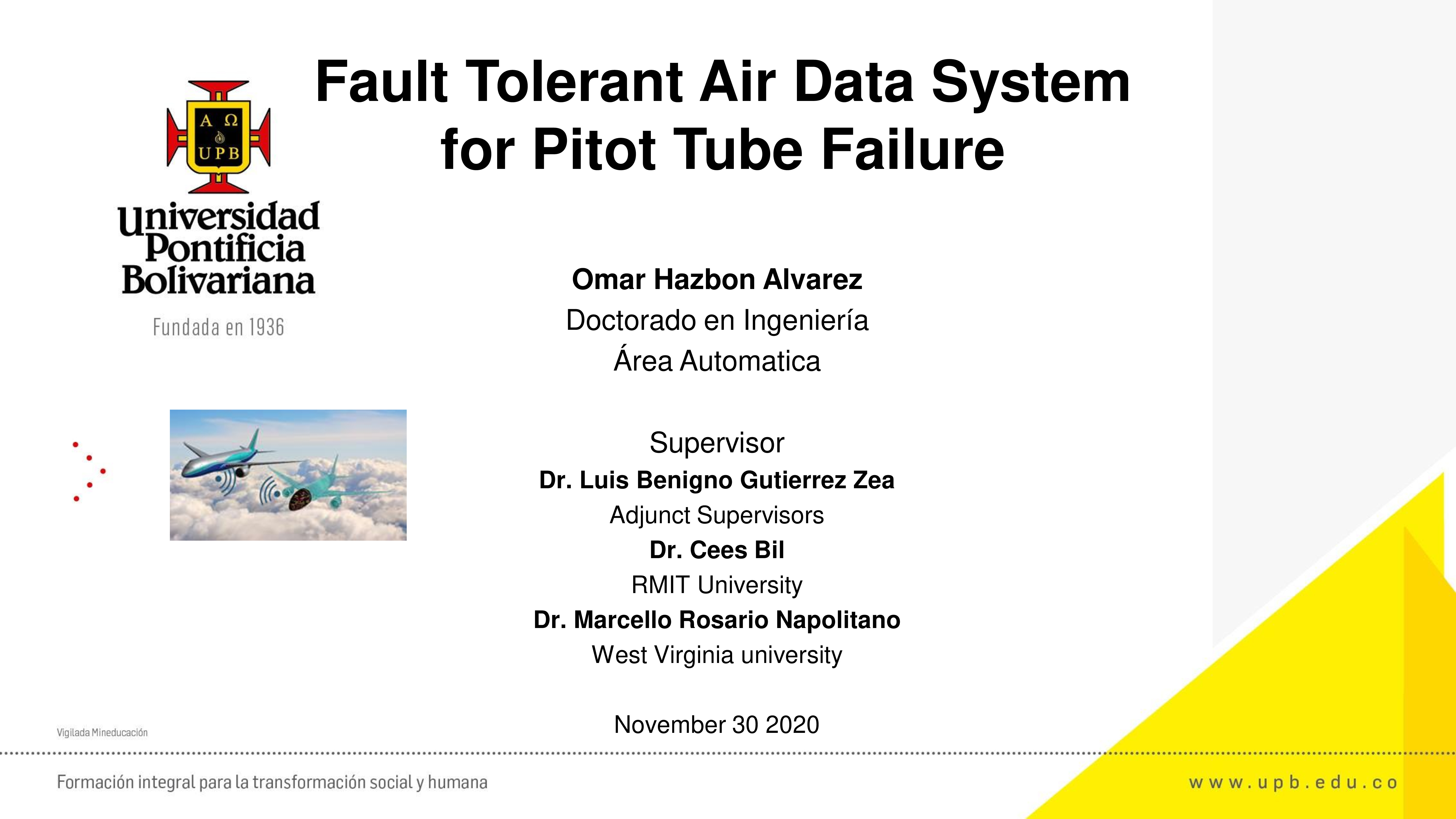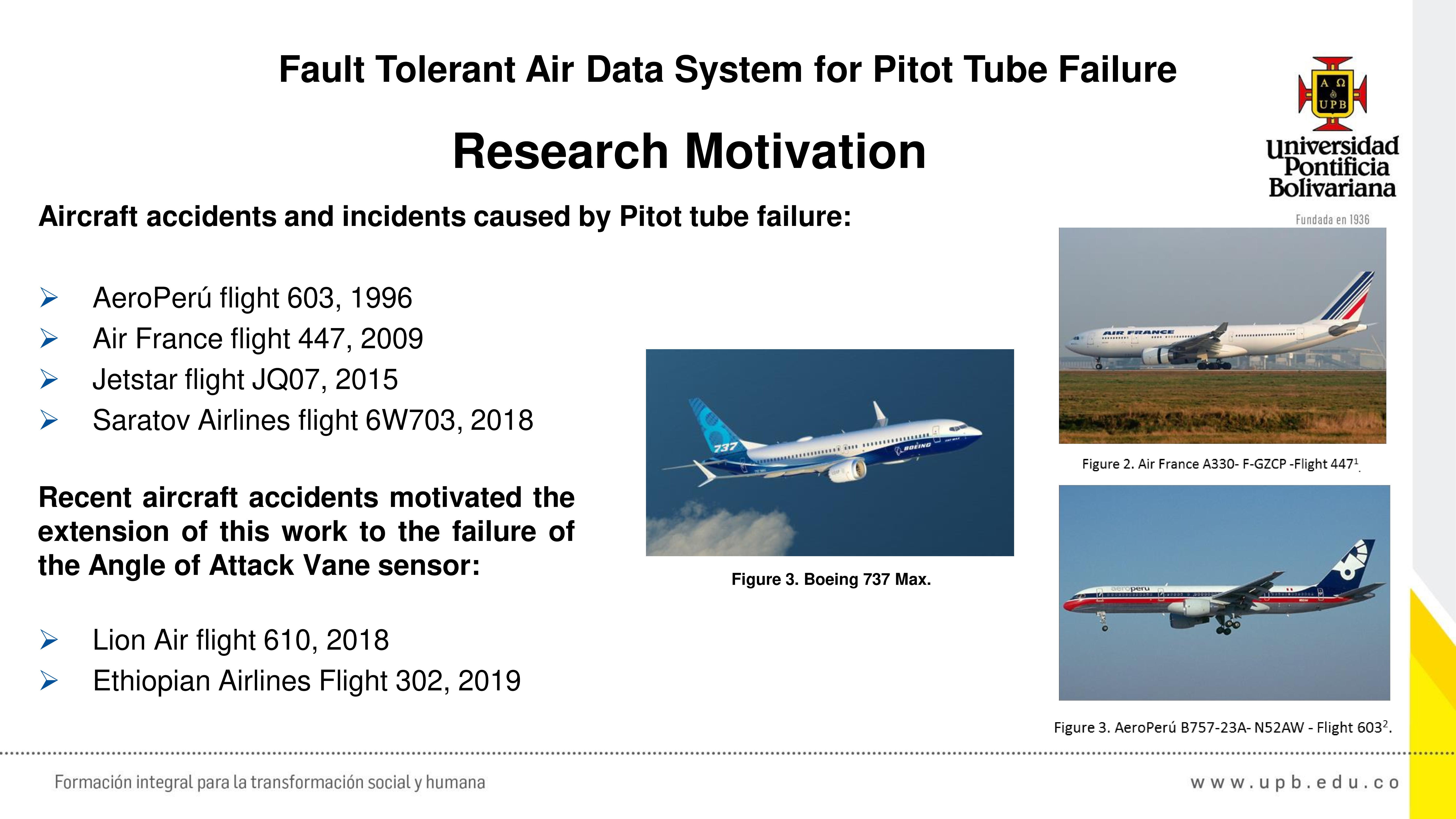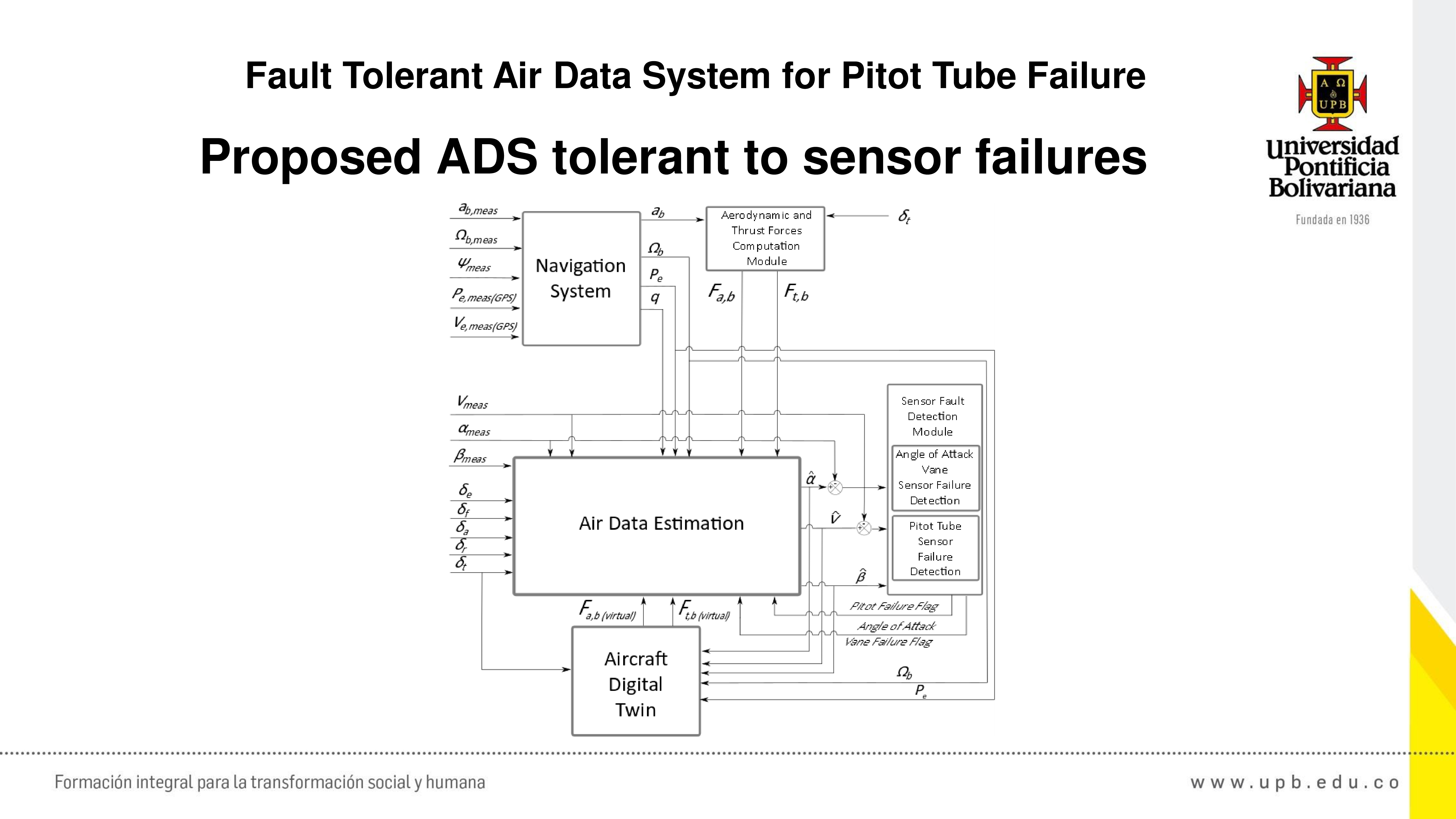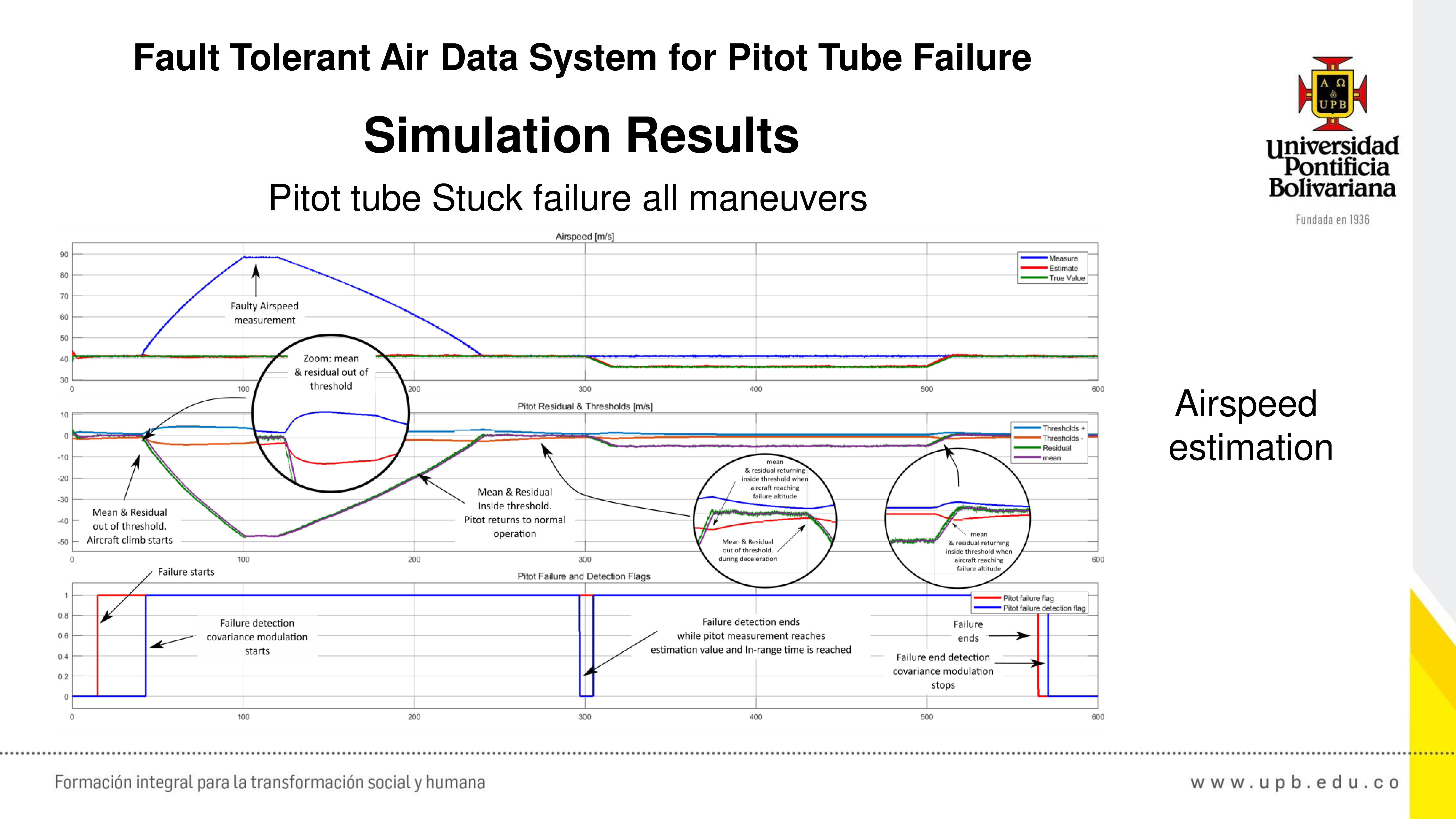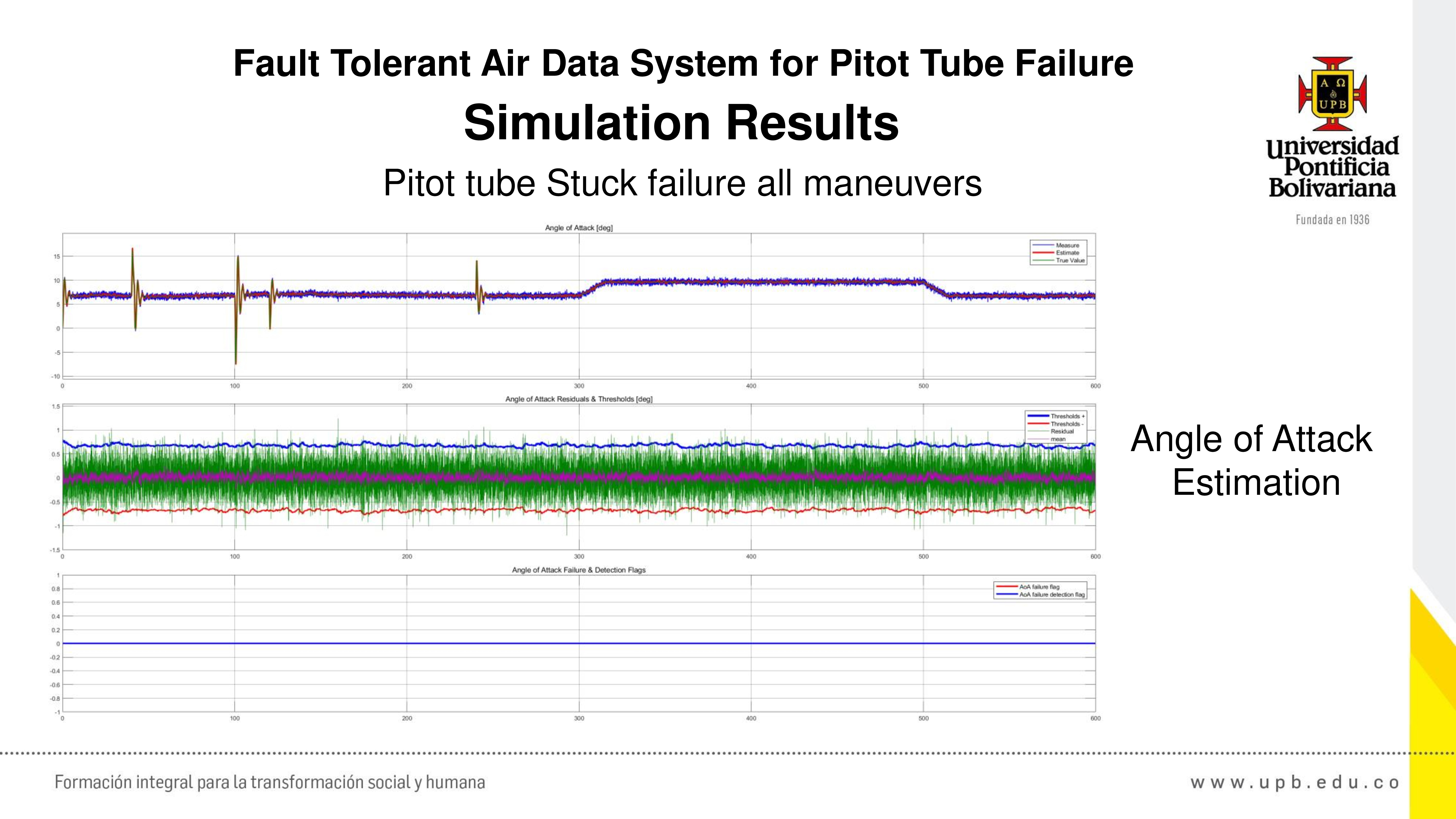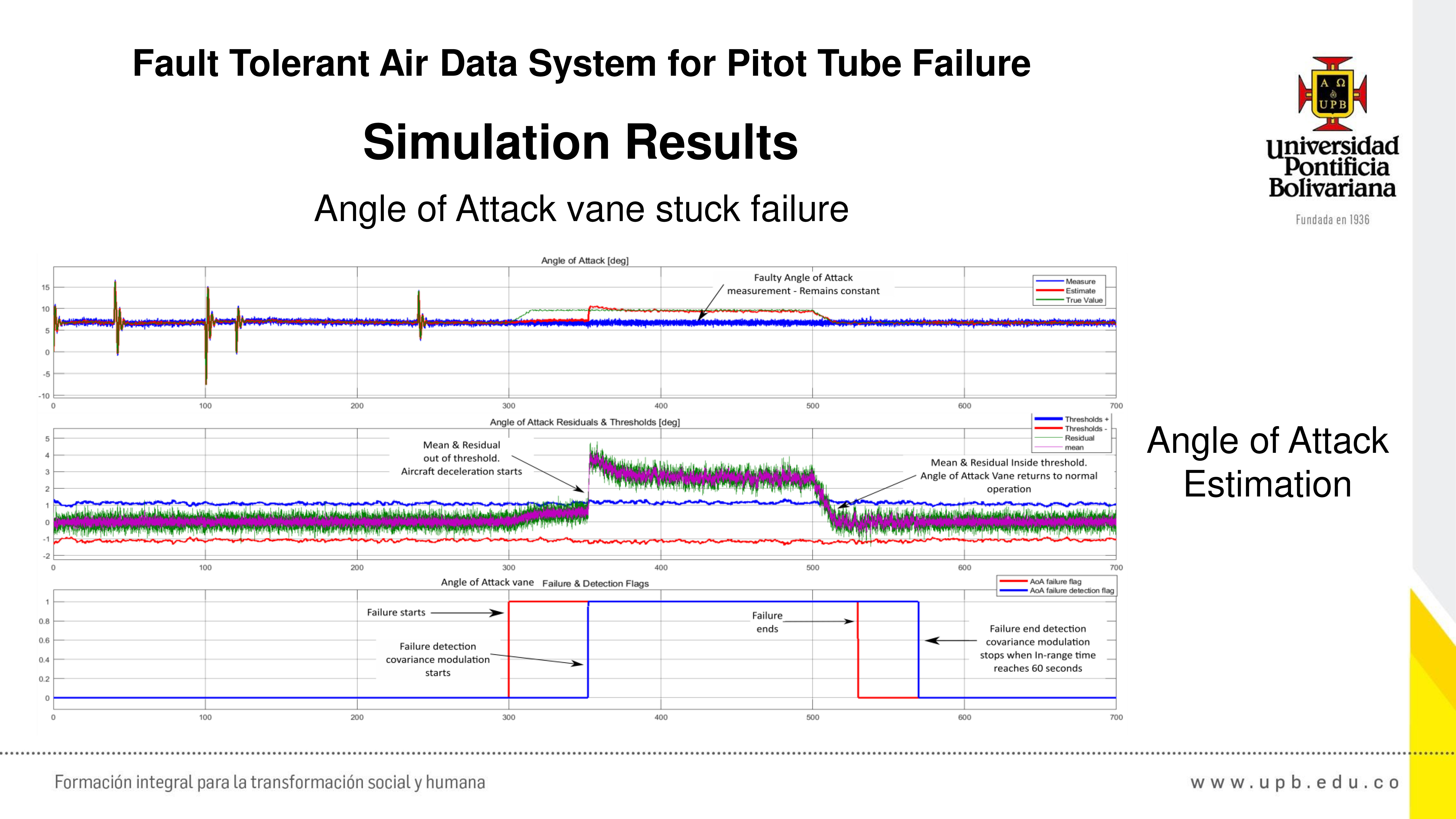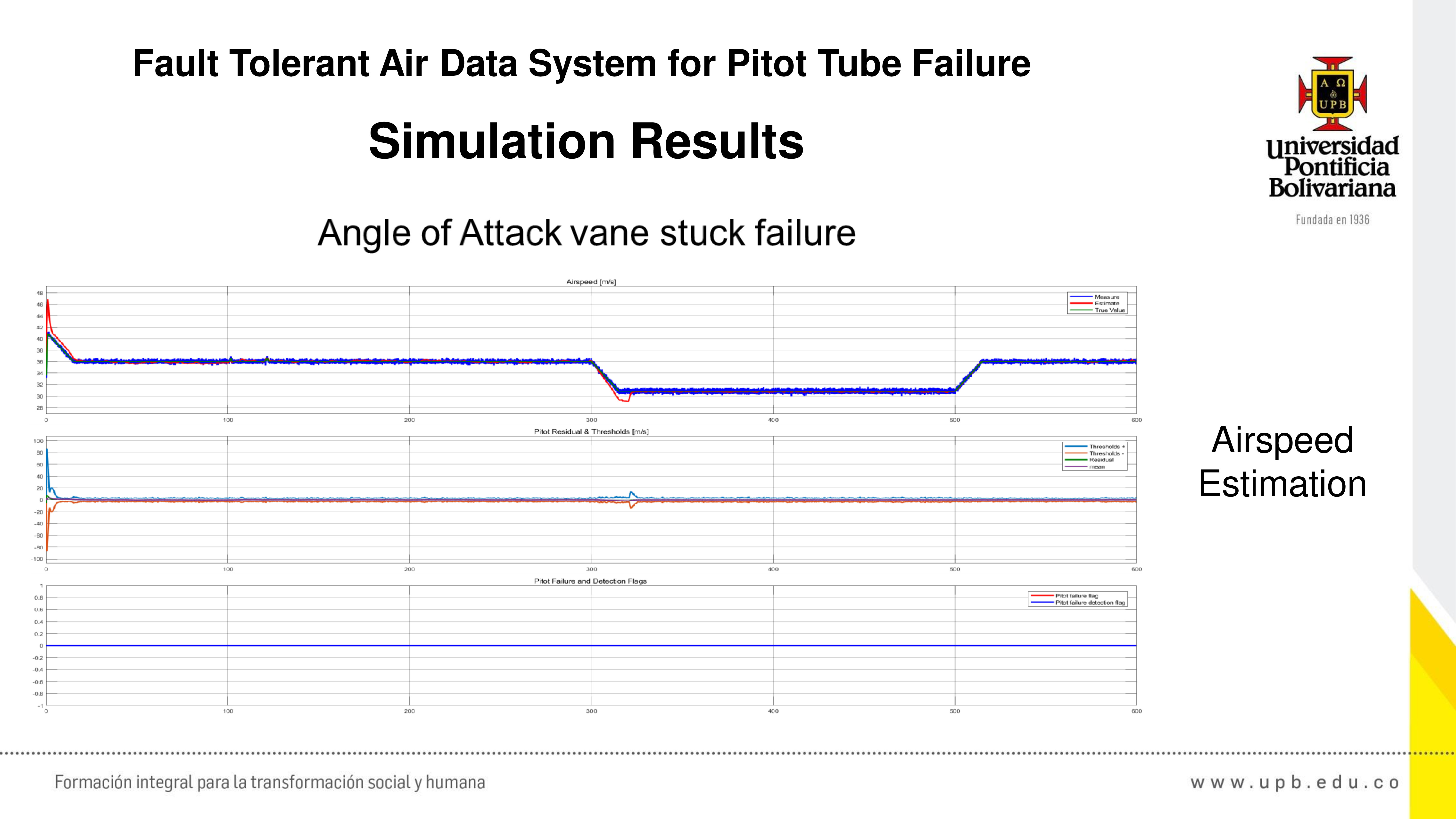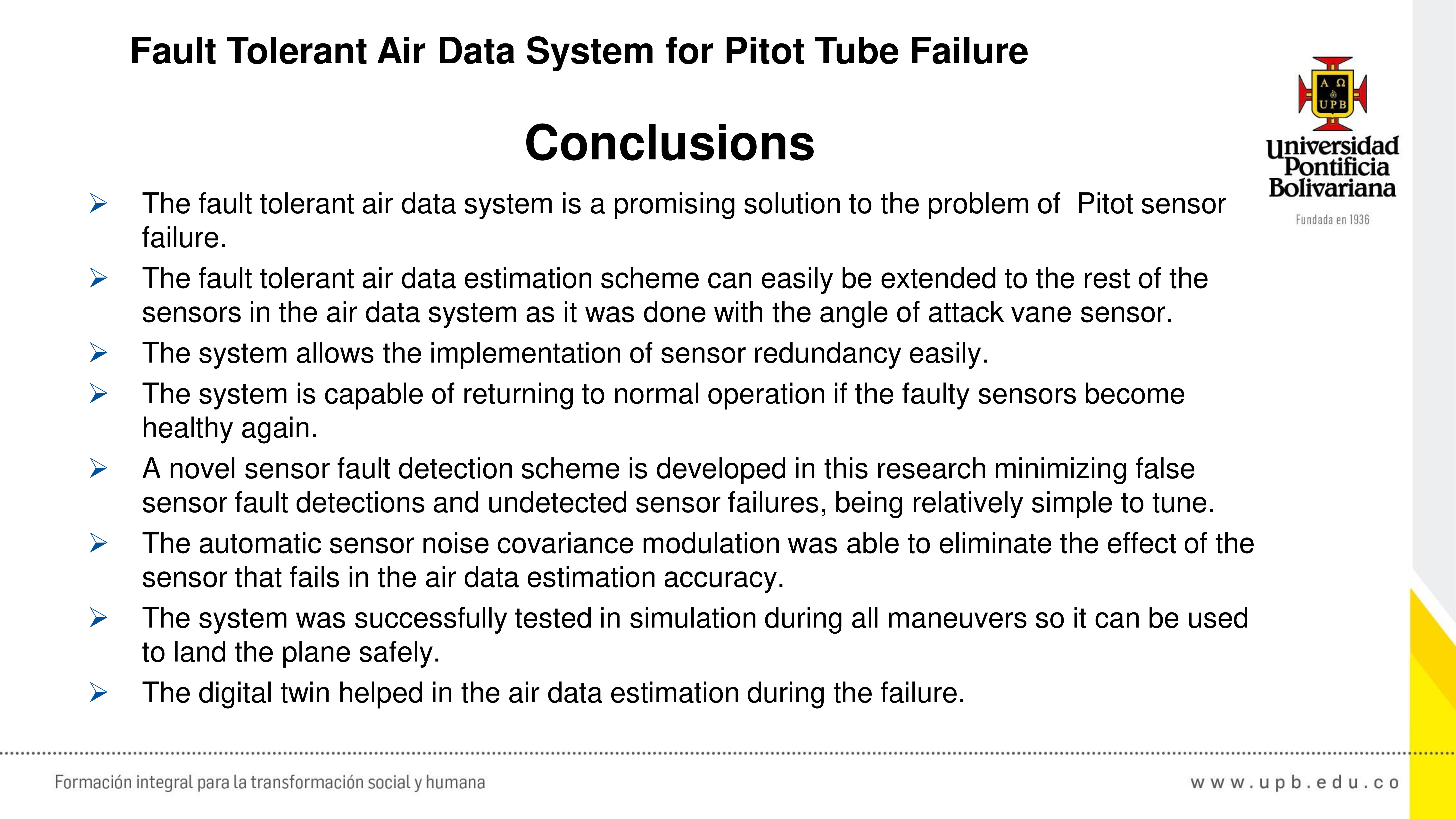
Summary
An integrated airspeed and angle of attack sensor failure detection identification, isolation and accommodation scheme is proposed. The system uses information from the inertial measurement unit, available air data sensors, and an aircraft digital twin that provides virtual measurements of the aircraft’s aerodynamic and propulsion forces to feed a nonlinear estimator capable of detecting air sensor failure and suppress its effect on the aircraft air data prediction. The novelty of the proposed approach is that sensor fault detection, identification, isolation, and accommodation are integrated into a feedback scheme where the information produced by fault detection is used to modulate the noise covariance of faulty sensors so that the nonlinear estimator is able to maintain the air data estimate with a small error despite the presence of various failures in the air data sensors.
The system was developed and tested in simulation. A Matlab/Simulink Ryan Navion aircraft simulation model was developed using flight test and wind tunnel data from Princeton University Flight Research Laboratory. Matlab/Simulink sensor models were developed using actual measured sensor data. A Dryden wind turbulence model was used to test the system against atmospheric perturbations. Flight simulations included climb, cruise, turns and descent maneuvers.
Independent and joint Pitot tube and angle of attack vane sensor failures were simulated. Simulation results showed that the fault tolerant estimation air data scheme is very accurate and robust against undetected or false alarm failures.
Short presentation
Related publications
[1] O. Hazbón, L. Gutiérrez, C. Bil, M. Napolitano, and M. L. Fravolini, Advances in Transdisciplinary Engineering, vol. 10, ch. Digital Twin Concept for Aircraft Sensor Failure, pp. 370–379. IOS Press, 2019. Available: http://ebooks.iospress.nl/volumearticle/52930, ISBN: 978-164368-020-0 (print) — 978-1-64368-021-7 (online), doi: https://doi.org/10.3233/ATDE190143. pdf
[2] O. Hazbón, L. Gutiérrez, C. Bil, M. Napolitano, and M. Fravolini, “Digital twin concept for aircraft system failure detection and correction,” in AIAA Aviation 2019 Forum, (Dallas, TX, USA), June 17-21, 2019. Available: https://arc.aiaa.org/doi/abs/10.2514/6.2019-2887, doi: https://doi.org/10.2514/6.2019-2887. pdf
[3] O. Hazbón, L. B. Gutiérrez, C. Bil, M. Napolitano, and M. L. Fravolini, “Review of methodologies for aircraft sensors fault detection and correction,” in AIAC18: 18th Australian International Aerospace Congress (2019), (Melbourne, Australia), pp. 259–264, Engineers Australia, Royal Aeronautical Society., Engineers Australia, Royal Aeronautical Society., February 24-26, 2019. Available: https://search.informit.com.au/documentSummary;dn=321908916273250;res=IELENG;type=pdf, ISBN: 9781925627213. pdf
